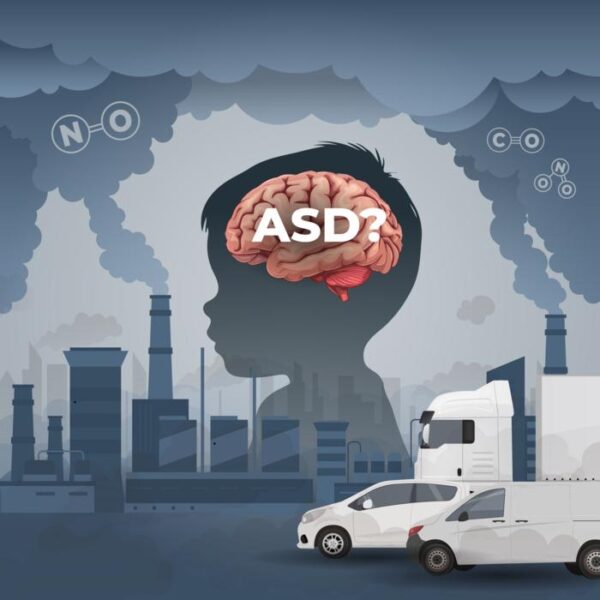Summary: A comprehensive scientific review reveals how common air pollutants can affect brain development, potentially increasing autism risk during critical developmental periods. The research highlights specific pollutants of concern and identifies multiple biological pathways through which air pollution may influence autism spectrum disorder development.
Published in Brain Medicine, November 12, 2024. | Reading time: 6 minutes
As global autism rates reach 1-1.5% of the population, scientists have identified air pollution as a significant environmental risk factor for autism spectrum disorder (ASD), with exposure during pregnancy and early childhood being particularly crucial.
The comprehensive review, published in Brain Medicine, examines how common air pollutants like fine particulate matter and nitrogen oxides can trigger complex biological changes affecting brain development.
Critical Timing of Exposure
“Different kinds of neurological disorders, including autism spectrum disorder, can be associated with this environmental factor,” explains Professor Haitham Amal from the Hebrew University of Jerusalem, the study’s senior author. “The timing of exposure appears crucial, with heightened vulnerability during prenatal development and early childhood when critical neurodevelopmental processes occur.”
Of particular concern is the discovery that smaller pollution particles, especially those known as PM2.5, can cross the placental barrier and directly affect fetal brain development.
Multiple Pathways to Brain Impact
The research identifies several biological mechanisms through which air pollutants may influence autism development. These include inflammation in the brain, oxidative stress, disruption of neurotransmitter systems, and changes to gene expression patterns.
“My lab has shown that NO plays a major role in ASD. However, this study emphasizes the critical role of this molecule and its derivatives on the brain,” Professor Amal notes.
Genetic Susceptibility and Environmental Factors
“The research suggests that individuals with genetic predisposition to ASD may be more vulnerable to the harmful effects of air pollution exposure,” Professor Amal explains. “This interaction between genetic and environmental factors opens new avenues for understanding ASD’s complex etiology.”
Future Implications
The findings raise important questions about urban planning and public health policies. As cities continue to grow worldwide, protecting vulnerable populations from air pollution becomes increasingly critical.
The research team emphasizes the need for studies examining how multiple pollutants work together, particularly during key developmental periods.
Glossary of Terms
- PM2.5: Fine particulate matter in air pollution small enough to cross biological barriers
- Neurotransmitter Systems: Chemical messaging networks in the brain that control communication between nerve cells
- Oxidative Stress: Cell damage caused by certain chemical reactions involving oxygen
- Etiology: The study of the causes or origins of a condition
- Neuroinflammation: Inflammatory response within the brain and nervous system
Test Your Knowledge
- Q: What percentage of the global population is currently affected by ASD?
A: 1-1.5% - Q: Which developmental periods show the highest vulnerability to air pollution’s effects?
A: Prenatal development and early childhood - Q: What type of particles can cross the placental barrier?
A: PM2.5 (fine particulate matter) - Q: Who may be most vulnerable to air pollution’s effects regarding ASD?
A: Individuals with genetic predisposition to ASD
Enjoy this story? Get our newsletter! https://scienceblog.substack.com/
If our reporting has informed or inspired you, please consider making a donation. Every contribution, no matter the size, empowers us to continue delivering accurate, engaging, and trustworthy science and medical news. Independent journalism requires time, effort, and resources—your support ensures we can keep uncovering the stories that matter most to you.
Join us in making knowledge accessible and impactful. Thank you for standing with us!

